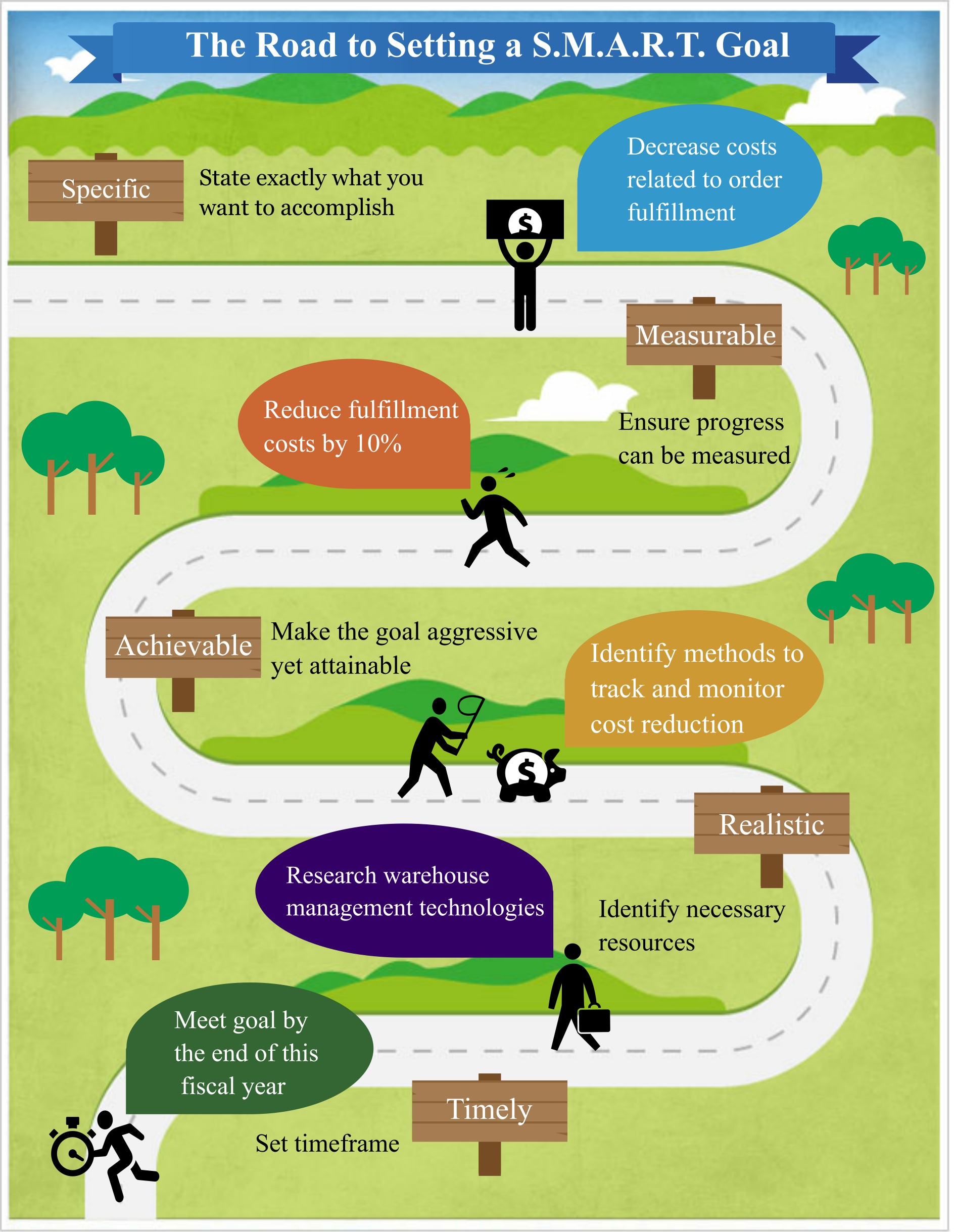
by Fronetics | Mar 2, 2015 | Blog, Leadership, Strategy

Frank Underwood and his house of cards offers up valuable business lessons.
Netflix’s Emmy-winning drama House of Card’s is one of the most binge-watched shows. Two percent of U.S. Netflix subscribers watched the entire 649 minutes of the second season in just over 72 hours. Around 6 to 10 percent of US subscribers watched at least one episode of the season the weekend it was released.
At the heart of House of Cards is Frank Underwood (F.U.), a man you hate to love. Notwithstanding Frank’s blatant disregard for morals and ethics, Frank and his house of cards offers up business lessons.
1. Relationships matter
Frank focuses much of his time on forging and nurturing relationships. He understands that relationships matter.
Relationships between individuals and relationships between organizations are what drive success. Develop and nurture relationships.
2. A strong team is essential
Frank’s team is critical to his success. This is not happenstance. Frank has assembled a team comprised of individuals with the right skillset to achieve his goals. He understands that success cannot be achieved without these individuals.
Assembling the right team is critical whether it be at the project or organizational level. A strong team is essential for success.
3. Be proactive
Frank once said: “If you don’t like how the table is set, turn over the table.” Frank does not wait for things to happen, he makes things happen.
If you don’t like how it is going (or not going), do something about it.
4. Stay true to your word
In business as in life it is important to stay true to your word. In Frank’s words: “The nature of promises, Linda, is that they remain immune to changing circumstances.”
5. Knowledge is powerful
“I don’t want to assume, I want to know”
Knowledge is critical to Frank’s success. Frank doesn’t make assumptions, rather he takes the time to learn the facts and to learn how the information he has gathered can best be used.
Do the same. Take the time to learn about what matters to those around you, to your customers, and your industry. Use this knowledge constructively.
6. Emotions matter
Not all decisions are made based on logic. Although often ignored, emotion plays a significant role in business. Understanding and speaking to the emotions of a customer or potential business partner, for example, can be the key to success. Or as Frank puts it: “I should have thought of this before. Appeal to the heart, not the brain.”
7. Change often
Remy Danton, Frank’s former Chief of Staff, gives Frank a watch inscribed with a quote from Winston Churchill: “To improve is to change. To perfect is to change often.”
Change is critical. Without change it is not possible to meet the dynamic needs of customers and of your business. Without change growth opportunities will diminish.
8. Don’t let your weaknesses be your downfall
Don’t let your weaknesses be your downfall. Work at strengthening your weaknesses so that you are not an easy target. As Frank points out: “Even Achilles was only as strong as his heel.”
9. Don’t lose sight of the details
The details often get lost in the big picture. However, it is often the details that are critical to success. As Frank puts it: “Pay attention to the fine print. It’s far more important than the selling price.”

by Fronetics | Mar 2, 2015 | Blog, Leadership, Strategy

Frank Underwood and his house of cards offers up valuable business lessons.
Netflix’s Emmy-winning drama House of Card’s is one of the most binge-watched shows. Two percent of U.S. Netflix subscribers watched the entire 649 minutes of the second season in just over 72 hours. Around 6 to 10 percent of US subscribers watched at least one episode of the season the weekend it was released.
At the heart of House of Cards is Frank Underwood (F.U.), a man you hate to love. Notwithstanding Frank’s blatant disregard for morals and ethics, Frank and his house of cards offers up business lessons.
1. Relationships matter
Frank focuses much of his time on forging and nurturing relationships. He understands that relationships matter.
Relationships between individuals and relationships between organizations are what drive success. Develop and nurture relationships.
2. A strong team is essential
Frank’s team is critical to his success. This is not happenstance. Frank has assembled a team comprised of individuals with the right skillset to achieve his goals. He understands that success cannot be achieved without these individuals.
Assembling the right team is critical whether it be at the project or organizational level. A strong team is essential for success.
3. Be proactive
Frank once said: “If you don’t like how the table is set, turn over the table.” Frank does not wait for things to happen, he makes things happen.
If you don’t like how it is going (or not going), do something about it.
4. Stay true to your word
In business as in life it is important to stay true to your word. In Frank’s words: “The nature of promises, Linda, is that they remain immune to changing circumstances.”
5. Knowledge is powerful
“I don’t want to assume, I want to know”
Knowledge is critical to Frank’s success. Frank doesn’t make assumptions, rather he takes the time to learn the facts and to learn how the information he has gathered can best be used.
Do the same. Take the time to learn about what matters to those around you, to your customers, and your industry. Use this knowledge constructively.
6. Emotions matter
Not all decisions are made based on logic. Although often ignored, emotion plays a significant role in business. Understanding and speaking to the emotions of a customer or potential business partner, for example, can be the key to success. Or as Frank puts it: “I should have thought of this before. Appeal to the heart, not the brain.”
7. Change often
Remy Danton, Frank’s former Chief of Staff, gives Frank a watch inscribed with a quote from Winston Churchill: “To improve is to change. To perfect is to change often.”
Change is critical. Without change it is not possible to meet the dynamic needs of customers and of your business. Without change growth opportunities will diminish.
8. Don’t let your weaknesses be your downfall
Don’t let your weaknesses be your downfall. Work at strengthening your weaknesses so that you are not an easy target. As Frank points out: “Even Achilles was only as strong as his heel.”
9. Don’t lose sight of the details
The details often get lost in the big picture. However, it is often the details that are critical to success. As Frank puts it: “Pay attention to the fine print. It’s far more important than the selling price.”
![Get SMART about your marketing goals [Free Marketing Goals Template]](https://fronetics.com/wp-content/uploads/2024/10/marketing-goals.jpg)
by Fronetics | Jan 22, 2015 | Blog, Leadership, Marketing

Want to reach your marketing goals? It’s time to get SMART.
Do you know what it is you’d like to see your business achieve this year? It’s likely you do. In fact, most people know generally what they’d like to see happen over the course of a year because they plan. But don’t be fooled, SMART goal setting is far more than just planning.
If you aren’t yet familiar with the SMART Goal concept, it’s essentially a roadmap to success. It makes our goals Specific, Measurable, Attainable, Realistic, and Time-Bound. SMART Goals are a tool that can be applied in many settings. For example, SMART Goals can be used to reduce costs associated with order fulfillment as well as to increase your website’s monthly visits and visitor to lead conversation rate.
Let’s take a look at how one marketing manager, we’ll call him Sam, might apply the SMART goals framework to his marketing efforts.
Specific – Here Sam will describe his goal in detail. He knows he wants to increase website traffic this year, but that’s not enough, so he gets specific. Sam sets a goal of increasing website traffic by 15% by the end of this fiscal year.
Measurable – How will Sam track his progress? In order to keep Sam on track to meet his goal by target date he set, he decides to use the website performance indicators he already tracks monthly.
Attainable – Sam’s goal should be challenging, but not impossible to reach. He reviews his company’s digital media strategy and prior year website traffic reports. After reviewing those, he decides that his current goal to increase sales by $250,000 by the end of this fiscal year is challenging yet achievable.
Realistic – Sam’s company expanded its product line at the beginning of the fiscal year, so it’s likely the company will experience increased marketplace exposure – an ideal situation for his goal of increasing website traffic.
Time-Bound – Sam plans to reach his goal by the last date of this fiscal year. He will track his progress monthly using website performance indicators.
By setting a SMART goal, Sam gives himself a specific focus and builds structure to his general plan of increasing website traffic. Breaking it down into more manageable parts will give him the motivation he needs to reach his goal.
What are your marketing plans for this year? Do you have a SMART goal guiding you? Increase your chances of success by downloading our free Marketing Goals Template.

![Get SMART about your marketing goals [Free Marketing Goals Template]](https://fronetics.com/wp-content/uploads/2024/10/marketing-goals.jpg)
by Fronetics | Jan 22, 2015 | Blog, Leadership, Marketing

Want to reach your marketing goals? It’s time to get SMART.
Do you know what it is you’d like to see your business achieve this year? It’s likely you do. In fact, most people know generally what they’d like to see happen over the course of a year because they plan. But don’t be fooled, SMART goal setting is far more than just planning.
If you aren’t yet familiar with the SMART Goal concept, it’s essentially a roadmap to success. It makes our goals Specific, Measurable, Attainable, Realistic, and Time-Bound. SMART Goals are a tool that can be applied in many settings. For example, SMART Goals can be used to reduce costs associated with order fulfillment as well as to increase your website’s monthly visits and visitor to lead conversation rate.
Let’s take a look at how one marketing manager, we’ll call him Sam, might apply the SMART goals framework to his marketing efforts.
Specific – Here Sam will describe his goal in detail. He knows he wants to increase website traffic this year, but that’s not enough, so he gets specific. Sam sets a goal of increasing website traffic by 15% by the end of this fiscal year.
Measurable – How will Sam track his progress? In order to keep Sam on track to meet his goal by target date he set, he decides to use the website performance indicators he already tracks monthly.
Attainable – Sam’s goal should be challenging, but not impossible to reach. He reviews his company’s digital media strategy and prior year website traffic reports. After reviewing those, he decides that his current goal to increase sales by $250,000 by the end of this fiscal year is challenging yet achievable.
Realistic – Sam’s company expanded its product line at the beginning of the fiscal year, so it’s likely the company will experience increased marketplace exposure – an ideal situation for his goal of increasing website traffic.
Time-Bound – Sam plans to reach his goal by the last date of this fiscal year. He will track his progress monthly using website performance indicators.
By setting a SMART goal, Sam gives himself a specific focus and builds structure to his general plan of increasing website traffic. Breaking it down into more manageable parts will give him the motivation he needs to reach his goal.
What are your marketing plans for this year? Do you have a SMART goal guiding you? Increase your chances of success by downloading our free Marketing Goals Template.

![Supply Chain: 4 Essential Year End Questions to Ask Yourself [Infographic]](https://fronetics.com/wp-content/uploads/2024/10/SupplychainSMARTgoals-1080x675.jpg)
by Fronetics | Jan 14, 2015 | Blog, Leadership, Strategy, Supply Chain

Don’t start the year without asking these 4 essential questions.
Well, another year has come and gone. Out with the old, in with the new, right? Wait, not so fast. Don’t overlook the valuable information you can glean from conducting a year end review. Use these four questions as a guide to thoughtfully assess the past year. Then, read on to see how a few simple tasks can help shape your best year ever.
1. What were my biggest accomplishments this year?
Twelve months can seem like a long time when you consider everything that happened over the course of the last 365 days. Setting aside some time to review successful projects, notes of thanks from clients, or a particularly positive performance review reminds us what we’re capable of achieving and gives us a renewed sense of accomplishment.
Try this: This year, designate a file folder near your workspace to collect any materials or notes related to your successes as they occur. Doing so will make it easier for you to recall your accomplishments and provide quick access to a list of your achievements – helpful for a healthy dose of motivation or last-minute performance reviews.
2. How satisfied are you with the past year?
Were you successful in meeting the majority of your goals? Do you feel that you worked to your highest potential? Would you have done something differently? What about missed opportunities? Examining what went right and identifying areas for growth and opportunity are powerful exercises that both prevent the recurrence of negative behaviors and reinforce our commitment to our priorities.
Try this: Adding some context to your experiences presents a more accurate picture of your year by tempering unusual highs and lows. Thinking about your experiences of the past year in sum, try to assign a value to your entire year. How would you rate your year on a scale from 1 to 10? 1 to 100? Why?
3. Is my current daily routine structured to optimize time for my priorities?
It’s easy to fall victim to time suckers, especially when they become ingrained into your routine. Has your daily 15 minute coffee break gradually morphed into 25 minutes? Are your 10 minute “headline scans” now closer to 30 minutes? These small, seemingly innocent extensions can snowball into major time loss, causing unnecessary panic as you scramble to meet deadlines.
Try this: The start of a new year is a great time to reset (or rethink) our daily routines. Build activities into your day. If you’d like to continue your now-daily 25 minute coffee break, think about extending your work day by 25 minutes. Feeling like you can’t absorb everything news-worthy in less than 30 minutes? Set your morning alarm 30 minutes earlier so you can arrive to work having already completed your scan of daily headlines. By taking a hard look at where your time is actually going and then spending a few minutes realigning your daily routine with your priorities, you’re intentionally and consciously assigning time to the things you find the most important.
4. What is it that I want to achieve next year?
Each new year brings with it a renewed energy to being our best selves. In order to get started, we need to define our priorities and what our success will look like. Setting SMART goals, or goals that are specific, measurable, achievable, realistic, and timely, keeps us moving forward by providing detail and assigning accountability.
Try this: After reviewing your past year, set aside some time to consider what you’ll set out to achieve this year. Create a detailed roadmap to successful completion of your goals.
Use this infographic to help you set, and achieve your SMART goals.

How was your year in review? What were your biggest accomplishments? Are there any goals that you’ll carry over into the new year? Do you regularly set aside time at the close of a year to reflect? We’d love to hear what you do to reset for a new year.
![Supply Chain: 4 Essential Year End Questions to Ask Yourself [Infographic]](https://fronetics.com/wp-content/uploads/2024/10/SupplychainSMARTgoals-1080x675.jpg)
by Fronetics | Jan 14, 2015 | Blog, Leadership, Strategy, Supply Chain

Don’t start the year without asking these 4 essential questions.
Well, another year has come and gone. Out with the old, in with the new, right? Wait, not so fast. Don’t overlook the valuable information you can glean from conducting a year end review. Use these four questions as a guide to thoughtfully assess the past year. Then, read on to see how a few simple tasks can help shape your best year ever.
1. What were my biggest accomplishments this year?
Twelve months can seem like a long time when you consider everything that happened over the course of the last 365 days. Setting aside some time to review successful projects, notes of thanks from clients, or a particularly positive performance review reminds us what we’re capable of achieving and gives us a renewed sense of accomplishment.
Try this: This year, designate a file folder near your workspace to collect any materials or notes related to your successes as they occur. Doing so will make it easier for you to recall your accomplishments and provide quick access to a list of your achievements – helpful for a healthy dose of motivation or last-minute performance reviews.
2. How satisfied are you with the past year?
Were you successful in meeting the majority of your goals? Do you feel that you worked to your highest potential? Would you have done something differently? What about missed opportunities? Examining what went right and identifying areas for growth and opportunity are powerful exercises that both prevent the recurrence of negative behaviors and reinforce our commitment to our priorities.
Try this: Adding some context to your experiences presents a more accurate picture of your year by tempering unusual highs and lows. Thinking about your experiences of the past year in sum, try to assign a value to your entire year. How would you rate your year on a scale from 1 to 10? 1 to 100? Why?
3. Is my current daily routine structured to optimize time for my priorities?
It’s easy to fall victim to time suckers, especially when they become ingrained into your routine. Has your daily 15 minute coffee break gradually morphed into 25 minutes? Are your 10 minute “headline scans” now closer to 30 minutes? These small, seemingly innocent extensions can snowball into major time loss, causing unnecessary panic as you scramble to meet deadlines.
Try this: The start of a new year is a great time to reset (or rethink) our daily routines. Build activities into your day. If you’d like to continue your now-daily 25 minute coffee break, think about extending your work day by 25 minutes. Feeling like you can’t absorb everything news-worthy in less than 30 minutes? Set your morning alarm 30 minutes earlier so you can arrive to work having already completed your scan of daily headlines. By taking a hard look at where your time is actually going and then spending a few minutes realigning your daily routine with your priorities, you’re intentionally and consciously assigning time to the things you find the most important.
4. What is it that I want to achieve next year?
Each new year brings with it a renewed energy to being our best selves. In order to get started, we need to define our priorities and what our success will look like. Setting SMART goals, or goals that are specific, measurable, achievable, realistic, and timely, keeps us moving forward by providing detail and assigning accountability.
Try this: After reviewing your past year, set aside some time to consider what you’ll set out to achieve this year. Create a detailed roadmap to successful completion of your goals.
Use this infographic to help you set, and achieve your SMART goals.

How was your year in review? What were your biggest accomplishments? Are there any goals that you’ll carry over into the new year? Do you regularly set aside time at the close of a year to reflect? We’d love to hear what you do to reset for a new year.


![Get SMART about your marketing goals [Free Marketing Goals Template]](https://fronetics.com/wp-content/uploads/2024/10/marketing-goals.jpg)

![Supply Chain: 4 Essential Year End Questions to Ask Yourself [Infographic]](https://fronetics.com/wp-content/uploads/2024/10/SupplychainSMARTgoals-1080x675.jpg)

